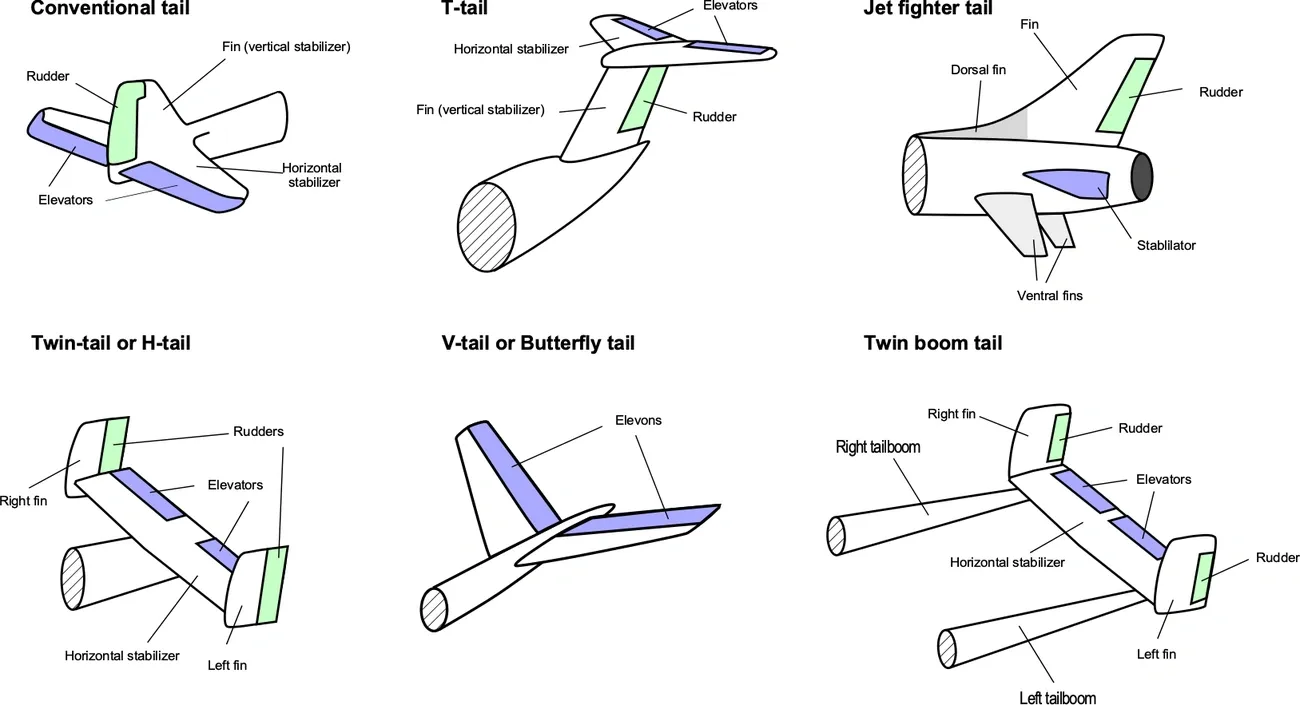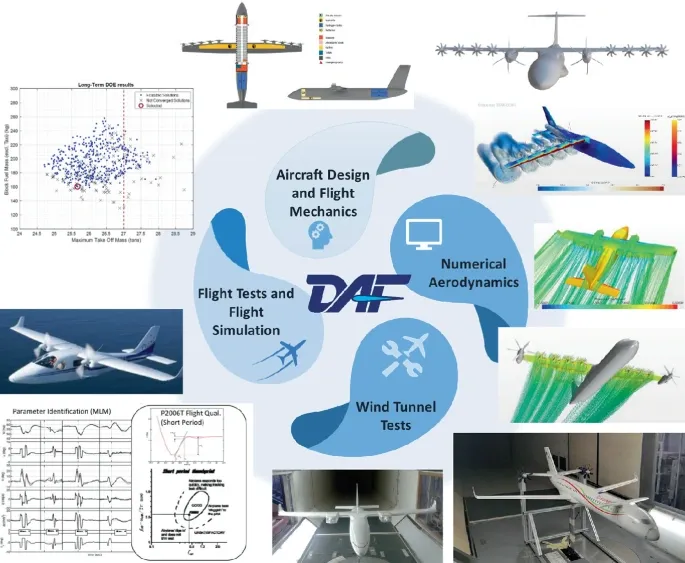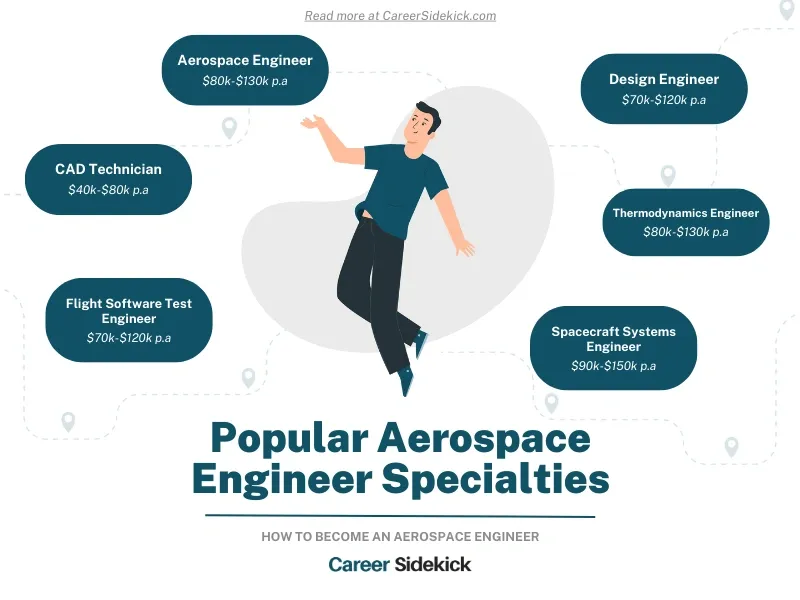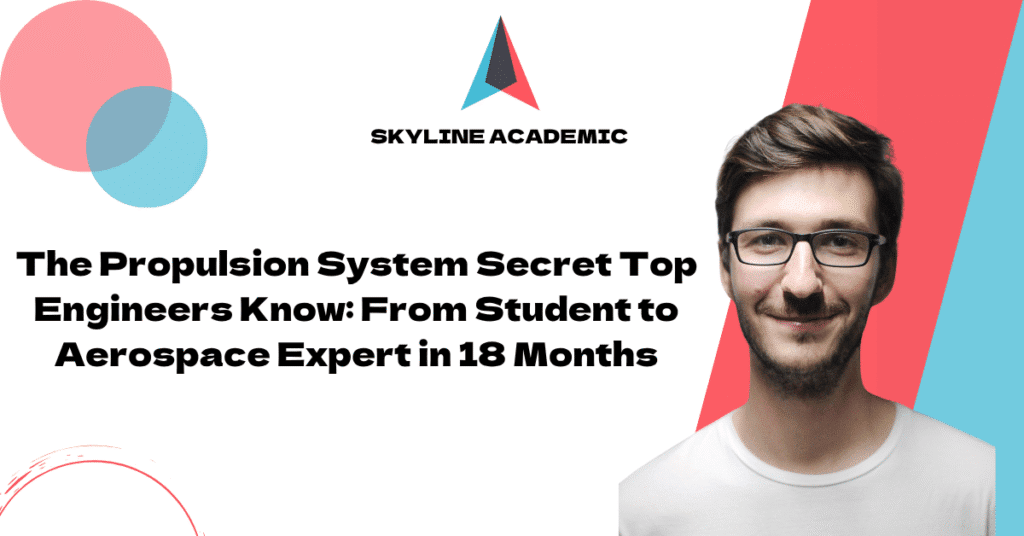How to Master Aerospace Engineering: From Beginner to Expert in 18 Months
Aerospace engineering and aeronautical engineering professionals command impressive salaries in the tech world. The U.S. Bureau of Labor Statistics reports median annual earnings of $122,270. Leading aerospace engineers can earn more than $205,850 annually.
Career opportunities continue to expand in this sector. Statistics show a 6% growth projection with 4,200 job openings each year from 2023 to 2033. The aerospace AI market will expand from $1.95 billion in 2025 to $34.15 billion by 2033.
Your career can advance rapidly in this dynamic field. This piece will show you how to become skilled at both disciplines in 18 months, whether you’re passionate about propulsion system design or excited by aerospace composite materials.
You’ll find the key differences between aeronautical engineering specializations and broader aerospace applications. The content covers reliability engineering, system safety principles, and the educational paths that accelerate your career growth. Are you ready to excel in one of technology’s most rewarding fields? Let’s begin your path to becoming an expert.
Understanding Aerospace and Aeronautical Engineering

Image Source: Eagle Pubs
Aerospace engineering leads the way in developing aircraft and spacecraft. This field has three distinct areas that cover all aspects of flying vehicles operating within and beyond Earth’s atmosphere.
What is aerospace engineering?
Aerospace engineering creates, tests and manufactures aircraft, spacecraft, satellites, missiles and related systems. The field brings together many technological and engineering areas like aerodynamics, air propulsion, avionics, materials science, structural analysis and manufacturing. Teams of specialists work together on aerospace engineering projects because of their complexity.
The three main branches of aerospace engineering are:
- Aeronautical Engineering: Creates vehicles that operate within Earth’s atmosphere such as airplanes, helicopters, drones, hot air balloons and other atmospheric aircraft
- Astronautical Engineering: Works with spacecraft and vehicles beyond Earth’s atmosphere, including satellites, rockets, space stations and interplanetary vehicles
- Avionics Engineering: Specializes in electronic systems used in both air and space vehicles, including control, communications, navigation and display systems
Aerospace engineers use physics and engineering principles to build and enhance aerospace technologies that are safe, efficient and high-performing. They lead design, manufacturing and testing processes while making sure designs meet engineering standards, customer needs and environmental requirements.
How is it different from aeronautical engineering?
Scope sets aerospace and aeronautical engineering apart. Aeronautical engineering focuses on aircraft within Earth’s atmosphere. Aerospace engineering covers both atmospheric flight and space operations.
Aeronautical engineering serves as a specialized part of the broader aerospace engineering field. Aeronautical engineers develop aircraft systems that work in our atmosphere. Aerospace engineers create vehicles for both atmospheric and space travel.
Aeronautical engineering deals with flight theory, technology and practice within Earth’s atmosphere. Aerospace engineers tackle unique challenges of space environments like microgravity, extreme temperatures and the vacuum of space.
Where do these fields overlap?
These disciplines share much common ground despite their differences. Both need strong knowledge of physics, mathematics and basic engineering principles. Success in either field requires analytical thinking, problem-solving abilities and creative innovation.
The educational background shows many similarities. Students learn thermodynamics, heat transfer, aircraft structures and mechanical control systems. Engineers from both fields often find work at aerospace companies, government agencies and defense contractors.
Job duties often cross paths. Engineers research, design flying vehicles and create new technologies for aviation, defense and exploration. Both specialties apply aerodynamics, structural design and propulsion system principles to their vehicles.
The term “aerospace engineering” now often replaces both “aeronautical engineering” and “astronautical engineering,” showing how these disciplines have grown together.
Educational Pathways to Get Started
You need to plan your educational trip carefully to build a strong foundation in aerospace and aeronautical engineering. The right path can speed up your progress by a lot as you move from beginner to expert. This lets you focus on specialized areas like propulsion systems or aerospace composite materials.
Bachelor’s degree requirements
A bachelor’s degree in aerospace engineering needs 120-128 credit hours. Programs think over every aspect of the curriculum to build both theoretical knowledge and practical skills. Most programs include:
- A minimum of 30 semester credit hours of mathematics and basic sciences
- At least 45 semester credit hours of engineering topics
- A broad education component that complements technical content
- A culminating major engineering design experience
The core curriculum covers thermodynamics, fluid mechanics, materials science, and aerospace structures. Technical electives help you customize your education based on your interests. Most universities want you to maintain a grade of “C” or better in all major courses.
Online vs on-campus programs
You can become an expert through both online and on-campus aerospace engineering programs. Each option has its benefits. On-campus programs give you direct access to laboratories, wind tunnels, and manufacturing facilities for hands-on experience.
Online programs work great for working professionals who can’t relocate. To name just one example, see the University of North Dakota’s online aerospace engineering degree that has similar accreditation as their on-campus program. Online students pay the same tuition whatever their location. Most online programs still need some on-campus time for laboratory work.
Some programs blend both approaches. Students complete theory work online and visit campus for practical training. Make sure to check if a program works in your area since some online options have location limits.
Certifications and short courses
Short courses and certifications complement formal education well. They also serve as starting points for people learning about the field. The University of Kansas offers more than 50 industry-specific aerospace short courses that run for 1-5 days. Industry experts teach these courses and show how theory works in real-life situations.
You can earn a Certificate of Specialization after finishing four specific courses. Internships during your undergraduate studies are a great way to get real-life skills. You’ll also network with peers and learn from experienced professionals.
Importance of ABET accreditation
ABET accreditation marks significant quality standards for aerospace engineering programs. This non-governmental, peer-review process ensures educational programs meet professional quality standards. ABET reviews individual programs rather than whole institutions.
ABET accredits 4,773 programs at 930 colleges in 42 countries as of October 2024. The accreditation reviews:
- Program educational objectives consistent with institutional mission
- Curriculum content and quality
- Faculty qualifications and sufficiency
- Institutional support and resources
Many employers look specifically for graduates from ABET-accredited programs. Some careers, especially those needing professional licenses, require graduation from an ABET-accredited program. This accreditation proves you’ve received proper training that meets aerospace industry standards.
Core Skills You Need to Succeed

Image Source: SpringerLink
Success in aerospace engineering depends on mastering specific technical and interpersonal skills. These competencies will shape how well you design, analyze, and implement complex aerospace systems.
Mathematics and physics fundamentals
Aerospace engineers must excel at mathematics. You’ll need expertise in:
- Calculus I and II
- Differential equations
- Linear algebra
- Multivariable calculus
- Statistics and probability
Advanced mathematical skills become even more important for graduate-level aerospace work. Students take courses in vector and tensor analysis, complex variables, and optimization methods. Physics knowledge must support your mathematical foundation in:
- Classical mechanics
- Thermodynamics
- Fluid mechanics
- Electromagnetism
These fundamentals help you analyze aerodynamics, propulsion systems, and structural integrity the life-blood elements of aircraft design.
Simulation and modeling tools
Computer-aided engineering (CAE) software drives modern aerospace engineering. Simulation helps engineers test designs virtually before physical prototyping, which cuts costs throughout the product lifecycle. The most important modeling skills include:
- CAD (Computer-Aided Design) for developing 3D models
- FEA (Finite Element Analysis) for structural analysis
- CFD (Computational Fluid Dynamics) for aerodynamic simulation
Engineers use these tools to predict aircraft behavior and create safety assessments as part of model-based RAMS (Reliability, Availability, Maintainability and Safety).
Propulsion system design basics
Converting energy into thrust requires deep knowledge of propulsion fundamentals. Aerospace propulsion systems range from conventional jet engines to electric propulsion technologies. You must understand:
- Jet engines (used in commercial aircraft)
- Rocket engines (operating in space environments)
- Electric propulsion (quieter and more efficient)
Ready to excel in aerospace engineering? Get individual-specific guidance on propulsion systems and composite materials!
Working with aerospace composite materials
Composite materials grow increasingly important. The global aerospace composites market should expand from $11.50 billion in 2015 to $24.80 billion by 2025. Composites make up about 28% of the Airbus A320 airframe’s weight.
Key composite materials include:
- Carbon fiber reinforced plastics (CFRP)
- Glass fiber reinforced plastics (GFRP)
- GLARE (glass-fiber reinforced aluminum alloy)
These materials combine exceptional strength-to-weight ratios, making them perfect for lightweight yet strong aircraft structures.
Teamwork and communication
Aerospace projects always involve multidisciplinary teams. You must develop skills in:
- Team leadership and management
- Technical documentation and reporting
- Cross-disciplinary collaboration
Teams work best when they assign roles like team captain, recorder, spokesperson, and reflector. Employers value engineers who can explain complex concepts to non-technical stakeholders and contribute positively to team dynamics, beyond their technical expertise.
Specializations and Advanced Topics
Specialized expertise can turn a good aerospace engineer into an exceptional one. You can stand out in this competitive field by taking a closer look at specialized domains and developing unique expertise.
Flight dynamics and control systems
Flight dynamics shows how aircraft respond to control inputs and environmental forces. This field gets into the principles that govern vehicle motion, which includes roll, pitch, and yaw movements that determine an aircraft’s path. Control systems work like an aircraft’s nervous system and keep stability during flight operations.
The Wright brothers proved control was essential from aviation’s beginning their first powered flight succeeded because their warpable wings helped pilots control an unstable aircraft. Modern control systems now go beyond manual inputs to include sophisticated autopilots and autonomous navigation systems.
Modern aircraft use feedback loops and algorithms that adjust control surfaces to maintain desired flight paths. These systems must handle both longitudinal stability (pitch) and lateral-directional stability (roll and yaw). Each has its unique handling characteristics.
Reliability engineering and system safety
System safety engineering identifies hazards and their causes. It predicts their severity and probability. Engineers want to reduce or eliminate hazards when possible, and minimize risk where elimination isn’t an option.
Reliability engineering is the life-blood of aerospace system design that ensures strong and dependable critical components. This field covers methods to measure and enhance reliability, availability, and maintainability of aerospace systems.
Key techniques include:
- Failure Modes and Effects Analysis (FMEA)
- Fault Tree Analysis (FTA)
- Root Cause Analysis (RCA)
Orbital mechanics and space systems
Orbital mechanics studies spacecraft motion under gravitational influence and creates the foundations for space mission design. The field covers everything from ascent trajectories and reentry to rendezvous computations and lunar/planetary trajectories.
Engineers calculate six orbital elements that mathematically describe an orbit using Kepler’s laws and Newton’s laws of motion. Different orbits serve various purposes. Geosynchronous orbits work for communications satellites, sun-synchronous orbits provide consistent Earth observation lighting conditions, and Hohmann transfer orbits enable efficient interplanetary travel.
Emerging technologies in aerospace
The aerospace industry grows with innovative technology that reshapes air travel and space exploration. New breakthroughs include fuel cells for improved safety and efficiency in UAV platforms, high-temperature coatings that work at 750°F, and advanced microelectronics with radiation-hardened circuits.
Satellite-based cellular service and hydrogen aircraft show where the industry is headed. Artificial intelligence, advanced materials, and eco-friendly propulsion systems continue to expand possibilities both within and beyond Earth’s atmosphere.
Career Opportunities and Industry Outlook

Image Source: Career Sidekick
The aerospace sector provides exciting career paths with promising growth opportunities. The U.S. Bureau of Labor Statistics expects aerospace engineering jobs to grow by 6% between 2021 and 2031.
Top job roles for aerospace engineers
Aerospace professionals can choose from several rewarding positions. Thermodynamics Engineers earn between USD 117,000-225,500 per year, while Aeronautical Engineers make USD 89,000-172,000. Aircraft Design Engineers command USD 138,500-166,500, and Flight Test Engineers receive USD 105,500-160,000. Industry leaders such as NASA, Lockheed Martin, and Honeywell continue to seek talented aerospace professionals.
Salary expectations by specialization
Aerospace engineers earned a median annual wage of USD 122,270 in 2021. Each specialty brings its own compensation range. Spacecraft Systems Engineers earn USD 99,000-151,000, while Propulsion Engineers receive USD 82,500-118,000. Research and development professionals see median wages of USD 128,020.
Industries hiring aerospace professionals
Aircraft manufacturers lead the way, but opportunities extend to many sectors. You’ll find positions with regulators like the Civil Aviation Authority, armed forces, government research agencies, airline companies, and space programs. The defense sector, particularly the US Department of Defense, remains a significant employer.
How to transition from aeronautical to aerospace roles
Mechanical engineers can smoothly move into aerospace positions because both fields share core coursework. While aerodynamics marks the key difference, many mechanical engineers work successfully on various aircraft systems without specific aerodynamics expertise.
Conclusion
Becoming an expert in aerospace engineering takes 18 months with proper education and smart skill building. This trip will teach you essential mathematics and physics knowledge, plus specialized skills in propulsion systems, composite materials, and flight dynamics. The difference between aeronautical and aerospace engineering becomes clear when we target specific learning areas and see where these fields overlap.
Your career outlook as an aerospace engineer looks bright. Median annual salaries reach $122,270, with specialized roles paying even more. The field expects 6% job growth through 2033, which will give a steady stream of jobs in a variety of sectors from commercial aviation to space exploration.
Pick an educational path that matches your situation and career goals – traditional bachelor’s degrees, online programs, or specialized certifications work well. ABET accreditation remains crucial to confirm your program’s quality and boost your job prospects. Real-world experience through internships or industry projects will speed up your learning process.
State-of-the-art technology keeps changing the digital world. Your skills stay relevant when you keep up with breakthroughs in AI, advanced materials, and eco-friendly propulsion systems. Technical knowledge matters, but teamwork, communication, and problem-solving skills prove just as valuable in this shared field.
Aerospace engineering offers rewarding careers in aircraft design or spacecraft development. This roadmap can help you grow from beginner to expert in 18 months. Soon you’ll contribute to one of technology’s most exciting and vital industries.



